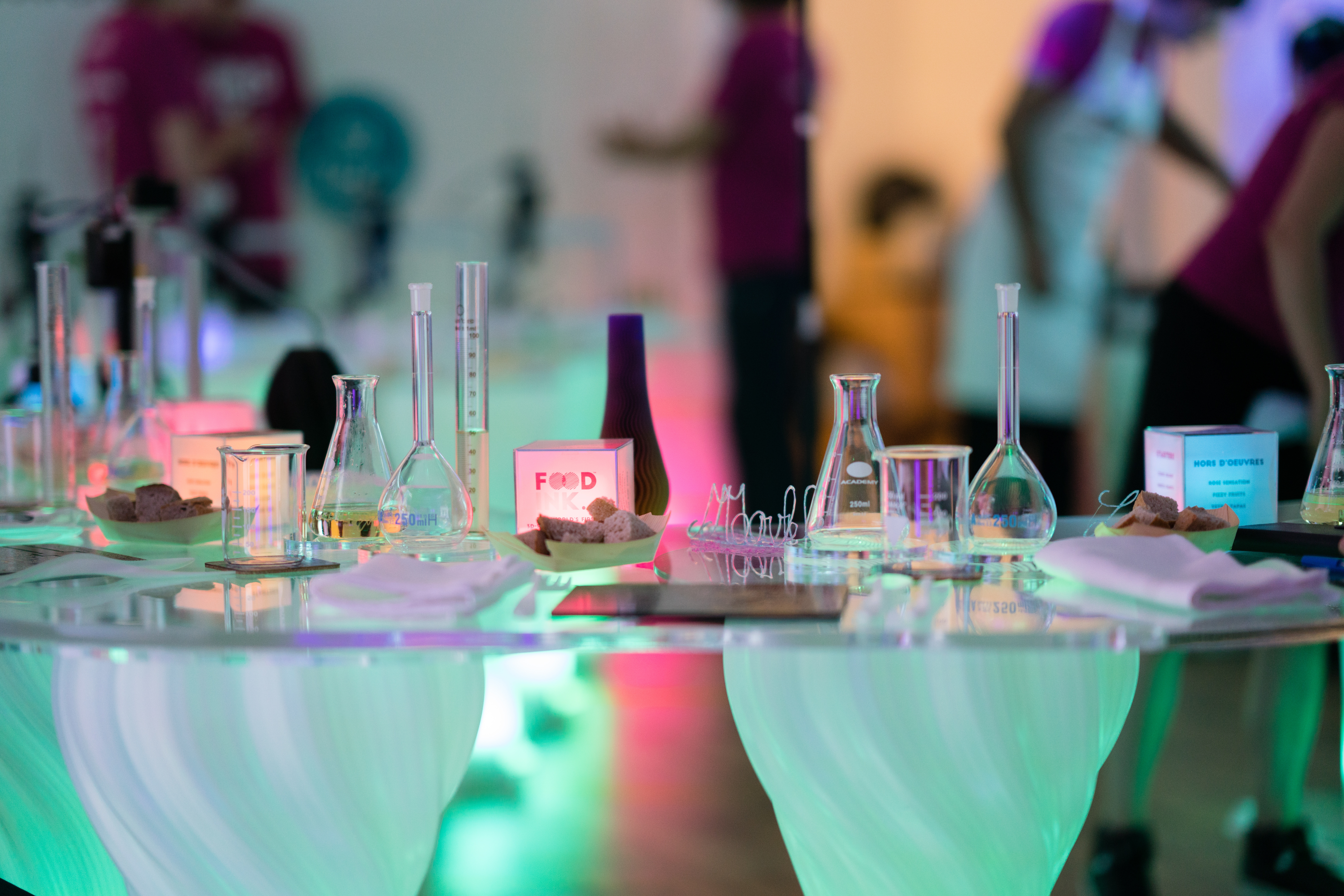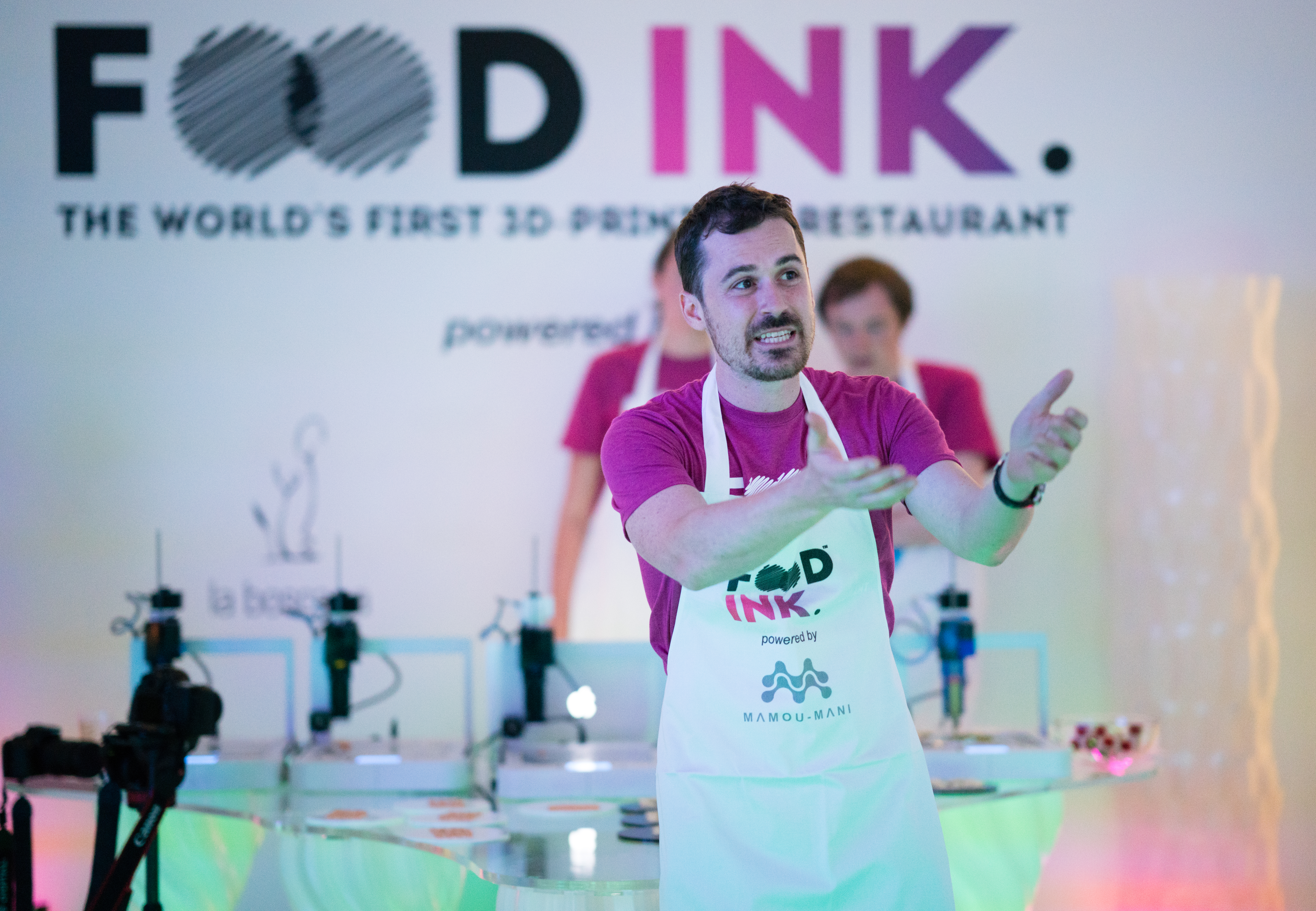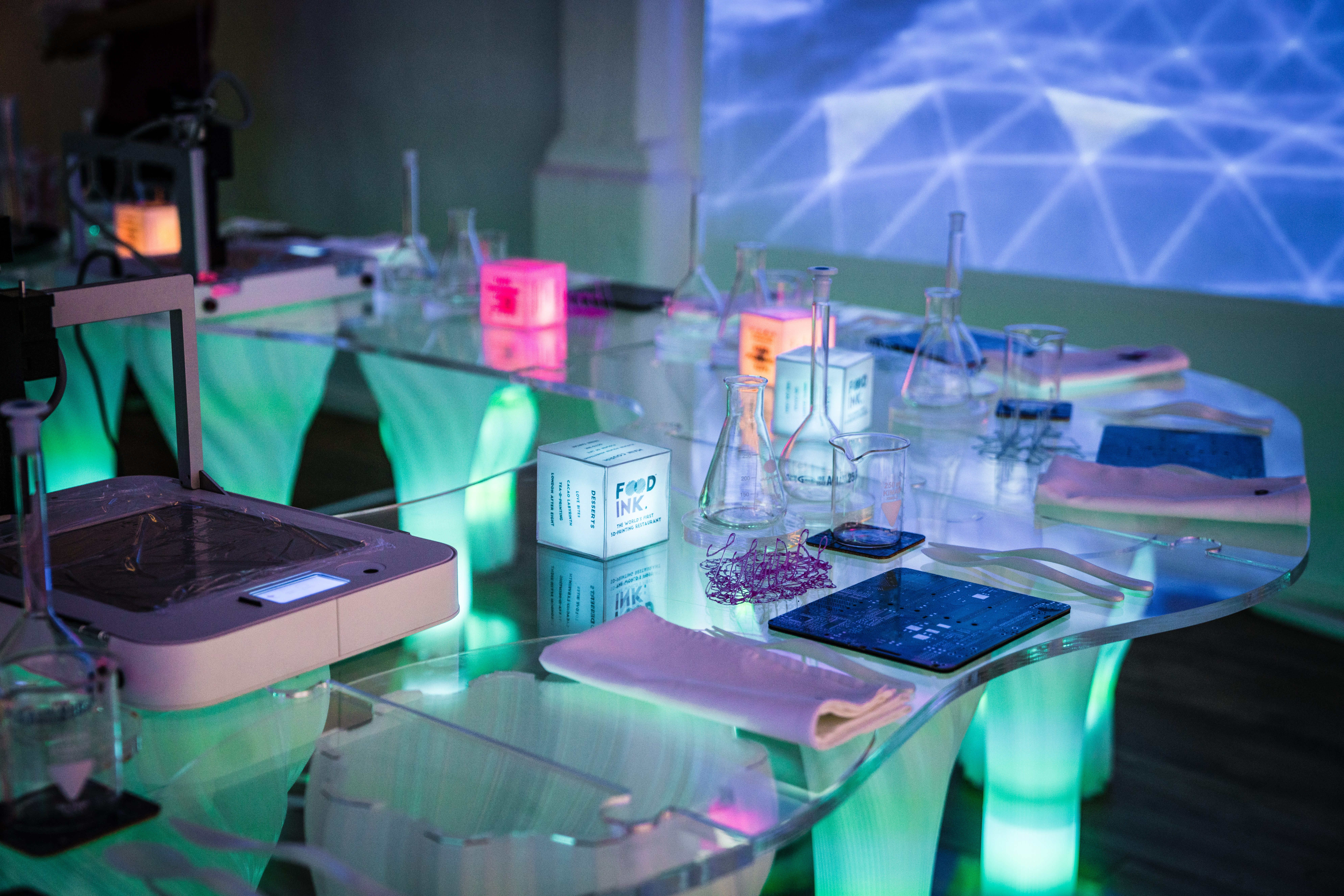30.01.2017
Food & Technology: Part 2
Food Ink

The marvel over 3D printing is nothing new but recently it has infiltrated the food industry in a more significant way. Antony Dobrzensky (founder and director of Food Ink) moved to London in 2015 to launch his dream of a new theme restaurant where everything is 3D-printed right before your eyes. Antony recruited Dutch company byFlow (creators of portable 3D printers) for their printers, chefs Mateo Blanch and Joel Castanye from La Boscana to prepare the food as well as 3D Samba for advice on adapting the printers to the kitchen. This resulted in Antony’s vision becoming reality, Food Ink, the first ever 3D printing pop up restaurant, where not only the food is 3D-printed but all the furniture and cutlery too.
The Food Ink website refers to the pop up restaurant as a place where ‘fine cuisine meets art, philosophy and tomorrow’s technologies.’  It goes on to explain that the concept brings together ‘Architects, Artists, Chefs, Designers, Engineers, Futurists, Industrials, Inventors and Technologists. We have devoted our knowledge, expertise and creativity to ensure that this revolutionary vision becomes a present experience.’ This announcement proves that people are experimenting with 3D printing and exploring its potential within the food industry. The Food Ink team believe that ‘technology needs to serve a purpose and we are using it to add magic to the magic.’
It goes on to explain that the concept brings together ‘Architects, Artists, Chefs, Designers, Engineers, Futurists, Industrials, Inventors and Technologists. We have devoted our knowledge, expertise and creativity to ensure that this revolutionary vision becomes a present experience.’ This announcement proves that people are experimenting with 3D printing and exploring its potential within the food industry. The Food Ink team believe that ‘technology needs to serve a purpose and we are using it to add magic to the magic.’
Not only is the food produced at Food Ink inventive and beautifully presented but the team are also keen to ensure that you are eating a nutrient rich and healthy meal, which resonates in the pop up. They hope to inspire more conversation about the future of nutrition in food and the importance of eating healthily. They especially hope to exhibit how technology can be used to change dietary habits and encourage a future of sustainable food.
We spoke to Arthur Mamou-Mani, the Food Ink design adviser and creator of the Food Ink restaurants 3D printed furniture. Arthur is also a French architect and the director of the award-winning practice Mamou-Mani Architects. We wanted to hear about Food Ink from Arthur’s perspective and how he felt about technology and designs effect on food. Here is what Arthur, primarily an architect and product designer had to say…

In what way do you think developments in technology and design is changing people’s perception of food and their relationship with eating?
There is a fear of technology in food. People are thriving for authenticity, yet in the haute cuisine, chefs such as Ferran Adriá or Heston Blumenthal are using our understanding of chemistry on the molecular level to create new dishes that push the way we perceive food. The two approaches are not incompatible; in fact our scientific understanding of food could help us create more ethical food. For example the insects are a great replacement for meat, as we now know that beef’s environmental impact is catastrophic when insects are much less demanding in terms of land and water.
How do you think Food Ink contributes to this change in relationship with food?
Food 3D Printing helps bring excitement to the table by using digital knowledge to create unique geometrical structures with food. After molecular food, this is structural food. We look at the way food can be organised, mixed, dropped, using mathematical precision. Files can be shared, and provided you have the right ink, you can reproduce culinary creations around the world in minutes. It could democratise the haute-cuisine both on molecular and geometrical level.
How do you envisage the future of 3D printing in the food industry?
As becomes increasingly digital, I believe we will start seeing digital eco-systems of “Digital Foodies”, people that will start sharing open-source digital recipes connecting to special mixes or “inks” sold on platforms such as Ocado but specialised in providing content for FoodPrinters. I believe people will sell their own inks as well as the files to mix them and shape them into incredible geometrical arrangement.
What do you find most exciting about Food Ink?
As an architect, I am interested in the structure of food and how we can play with textures, geometry and materiality in relation to taste. Imagine a scaffolding of food with sauces shaping itself within it, imagine gradients of density creating different flavours from hard to soft, from airy to solid, from layered to grid-like. With geometry, hand-in-hand with flavours, we could create a complete journey with one dish, play with your perception through time and space, like an architectural experience with food. This is what excites me the most.

Beyond the opening of this novel pop up restaurant (with a permanent restaurant in the works) the hypothesised benefits of 3D food printing are substantial. Those discussing it outline that it could be used to alleviate global food crises and malnutrition and as Arthur mentions above it could be used to create more ethical food. It could also help areas exposed to natural disasters, when access to food supplies are limited and on a completely different note, in 2014 students at the Indian Institute of Technology reportedly began discussions about the use of 3D printing for in-flight meals, to improve the standards of airline food.
Food Ink is just one example of people using technology and design to not only keep food interesting, novel and new but to teach society about nutrition and encourage more conscious and ethical eating. Whether you trust robots to create your food or not Food Ink is evidence of a movement which has a lot of potential.
Photo Credit: All photos where provided by Food Ink. You can also check their YouTube, Twitter, Facebook & Instagram for more info.
Watch: 360 Virtual Reality video of Inside the Food Ink Experience